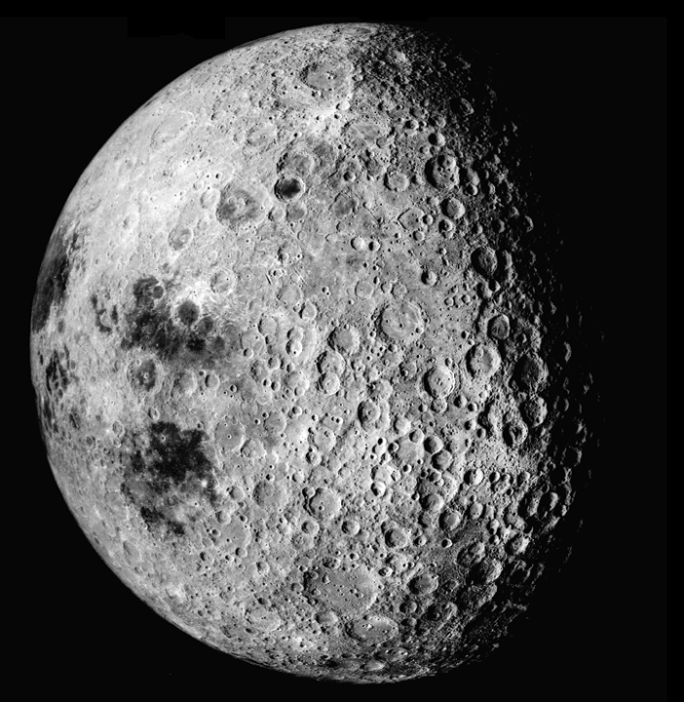
The Moon dances, spins and twirls and crater Goddard arcs past your view

The Moon was one of the first celestial objects viewed by man
Star gazers can pay respects to a true pioneer of human space travel Robert Goddard beginning on the night of October 10th, by taking a journey to the Moon to view the crater named after this gentleman of astronomy. Your view of the Moon’s crescent will show plenty of open landscape between the Moon’s eastern limb and Mare Crisium on this night.
Astronomy News – A large oval plain encompassing an area 270 miles wide by 350 miles long, with the long side running east to west, Mare Crisium will appear different on this night because of the foreshortening of the lunar globe. Mare Crisium also stands alone on the surface of the Moon and isn’t interconnected with the other maria you’ll view on the Moon’s surface during your “Journey to the Beginning of Space and Time”. The last place on the Moon’s surface to be visited by mankind, Mare Crisium, or the Sea of Crises, was host to the unmanned soviet spacecraft Luna 24 in 1976. Look for dark patches along the Moon’s limb on October 10th, which is actually hardened lava of Mare Marginis, the Sea on the Margin, and finds the short white arc just beyond the eastern shore of the sea. This short white arc is the illuminated rim of crater Goddard. Watch as Goddard arcs past the Moon’s eastern limb over the next few nights and you’ll get a good lesson in how the Earth’s satellite moves as the Moon’s eastern limb rotates away from Earth.
On October 15th, Goddard will appear in profile and you should see the rim of this crater poking outward, like two towering peaks framing a darker interior. On October 18th, Goddard will have disappeared over the limb and only about half of Mare Marginis will be viewable. On October 22nd, the Moon will be in full phase at 9:37 P.M. EDT and only an outline of the shoreline of Mare Marginis will be visible. By this time, Mare Crisium will appear much closer to the limb and is prominent in your view of the Moon.
Take a young astronomer on a journey to the Moon tonight
Why does Mare Crisium appear closer and what causes this visual sleight-of-hand? The Moon actually spins at a pretty constant rate, generally completing one rotation on its axis each month. In the same time frame, however, the Moon orbits the Earth on an elliptical path, and this means the Moon’s speed of rotation will vary. This allows viewers to see a few degrees beyond the normal limb of the Moon during specific time frames of the lunar cycle, which is an effect an astronomer refers to as the libration of the Moon.
Learn why astronomy binoculars are a popular choice with amateur astronomers
Read about the Anasazi Indians
Read about astronomers viewing a supernova they think might have given birth to a black hole

